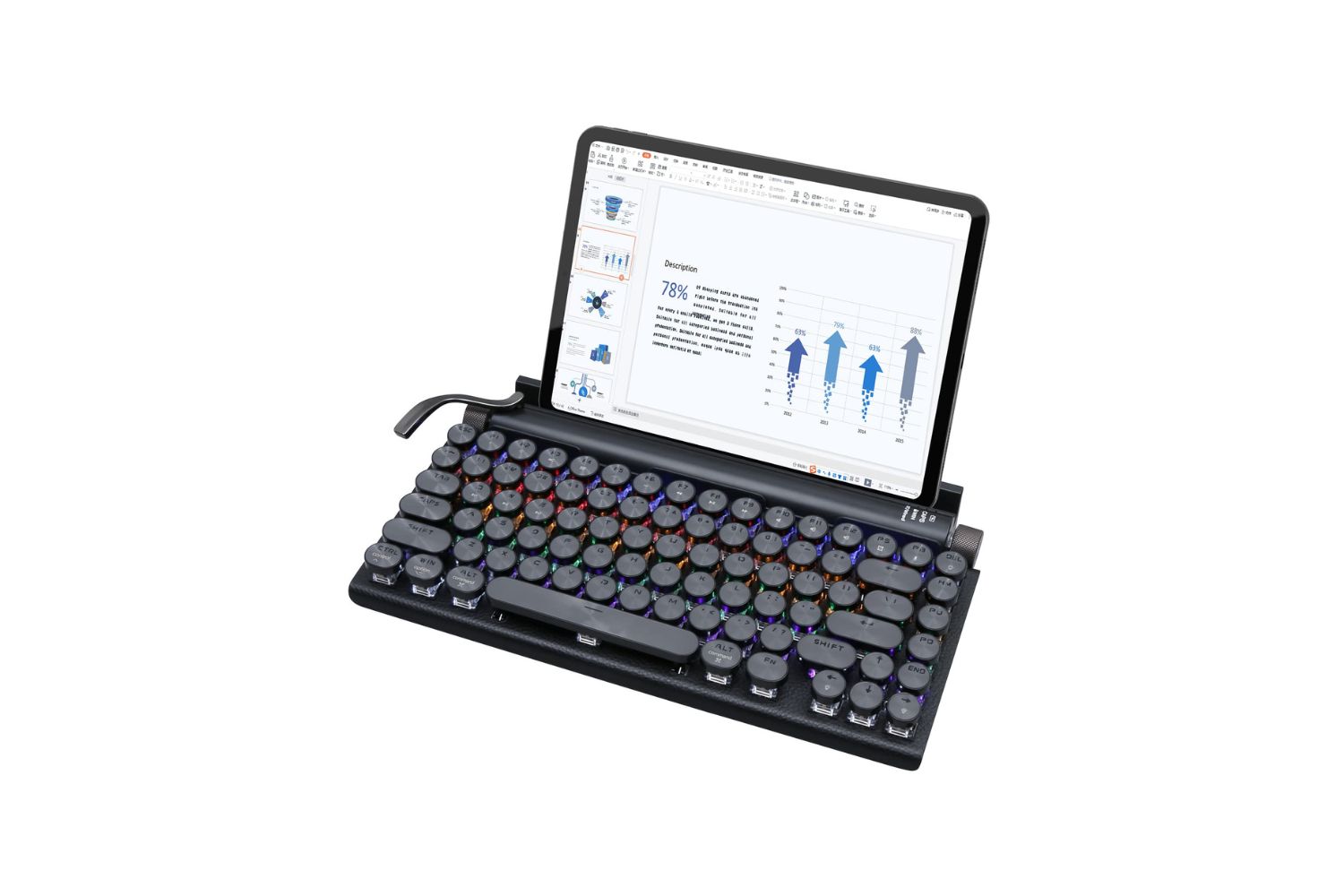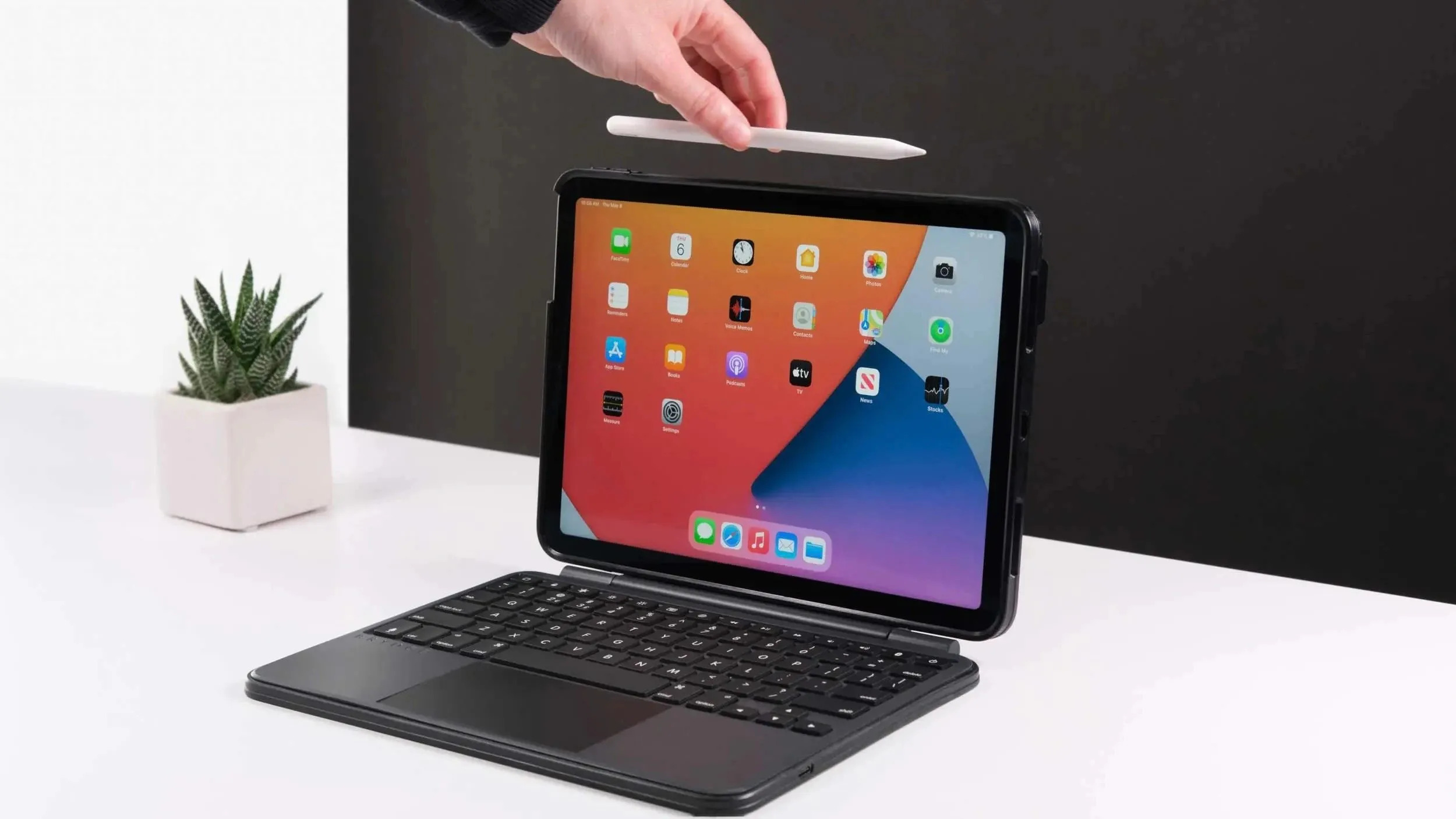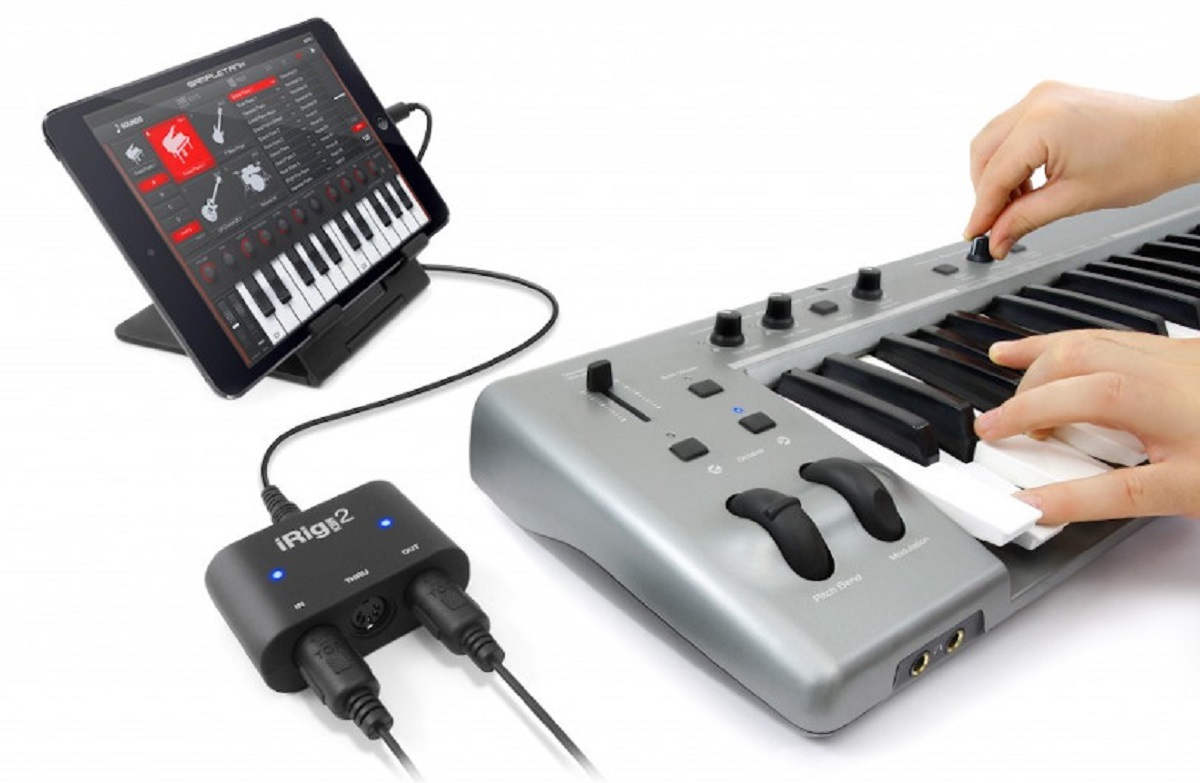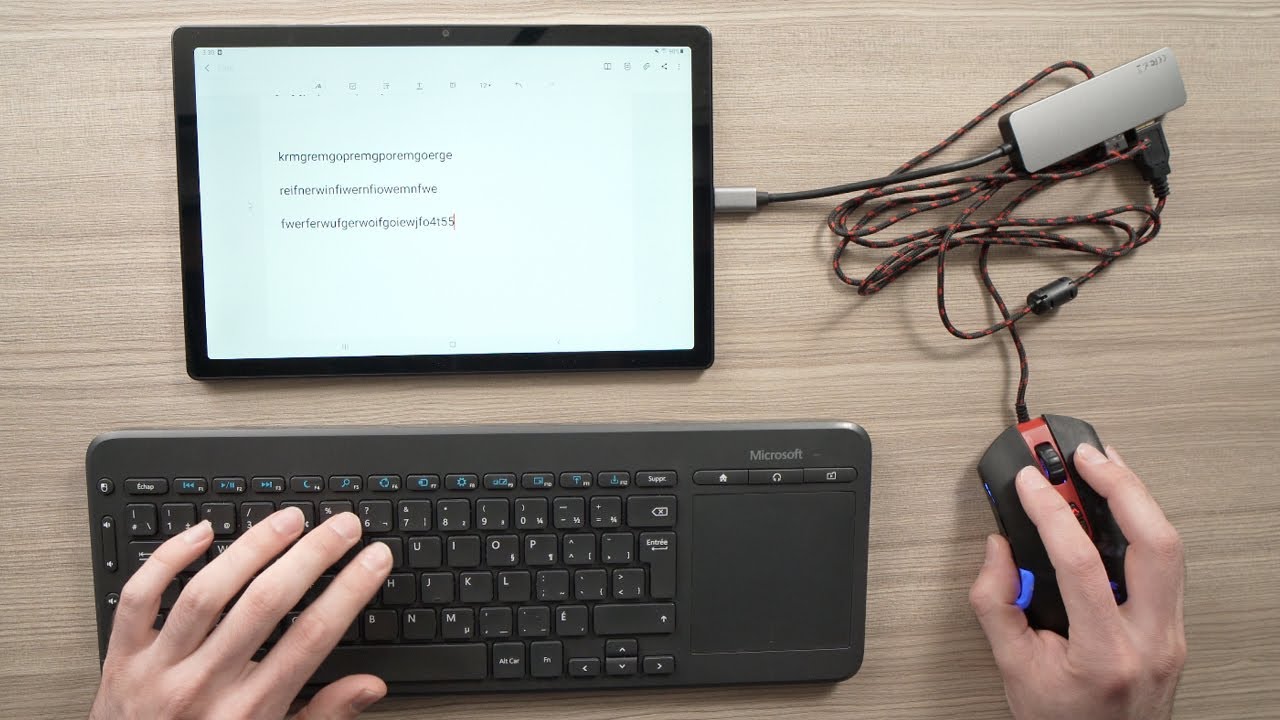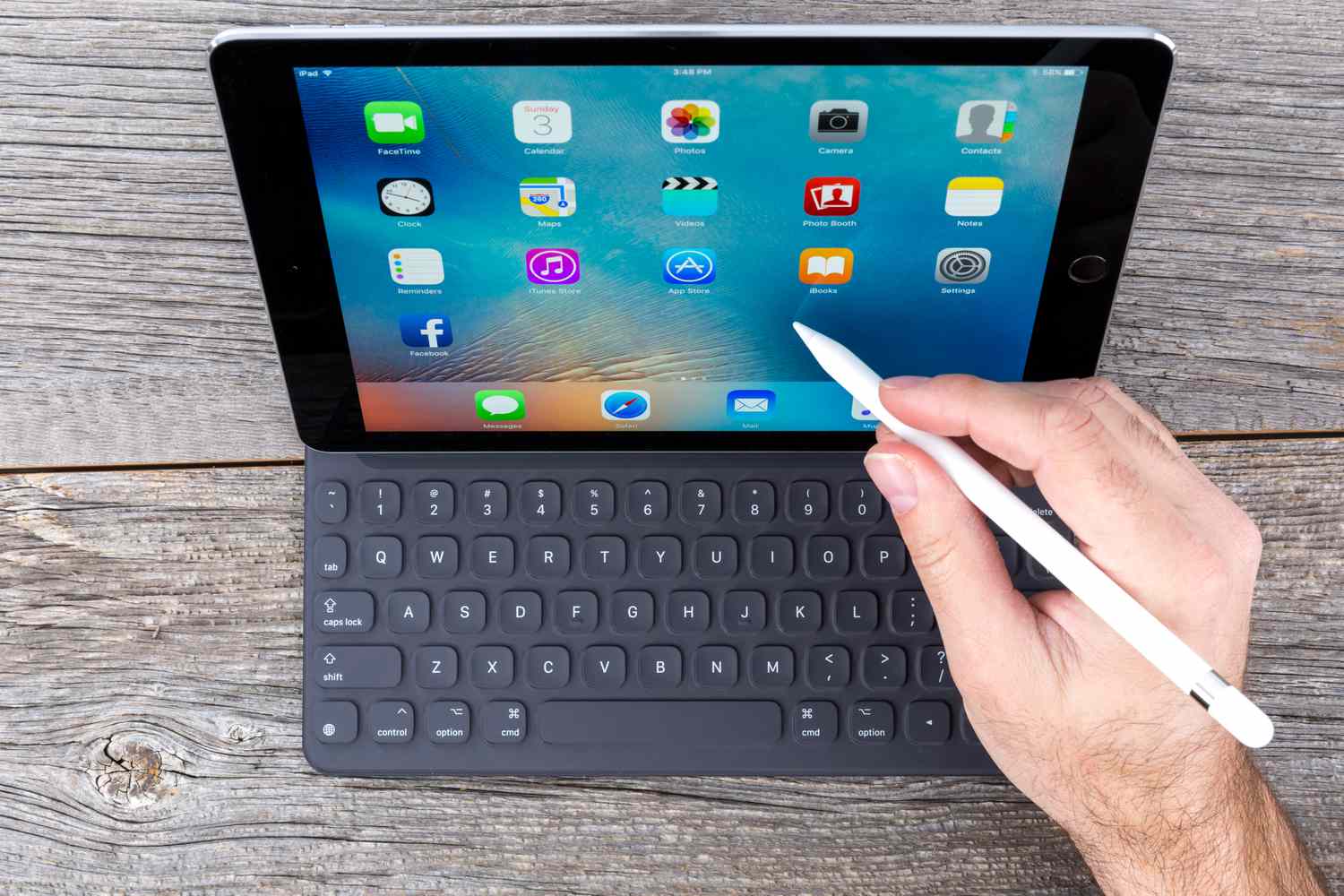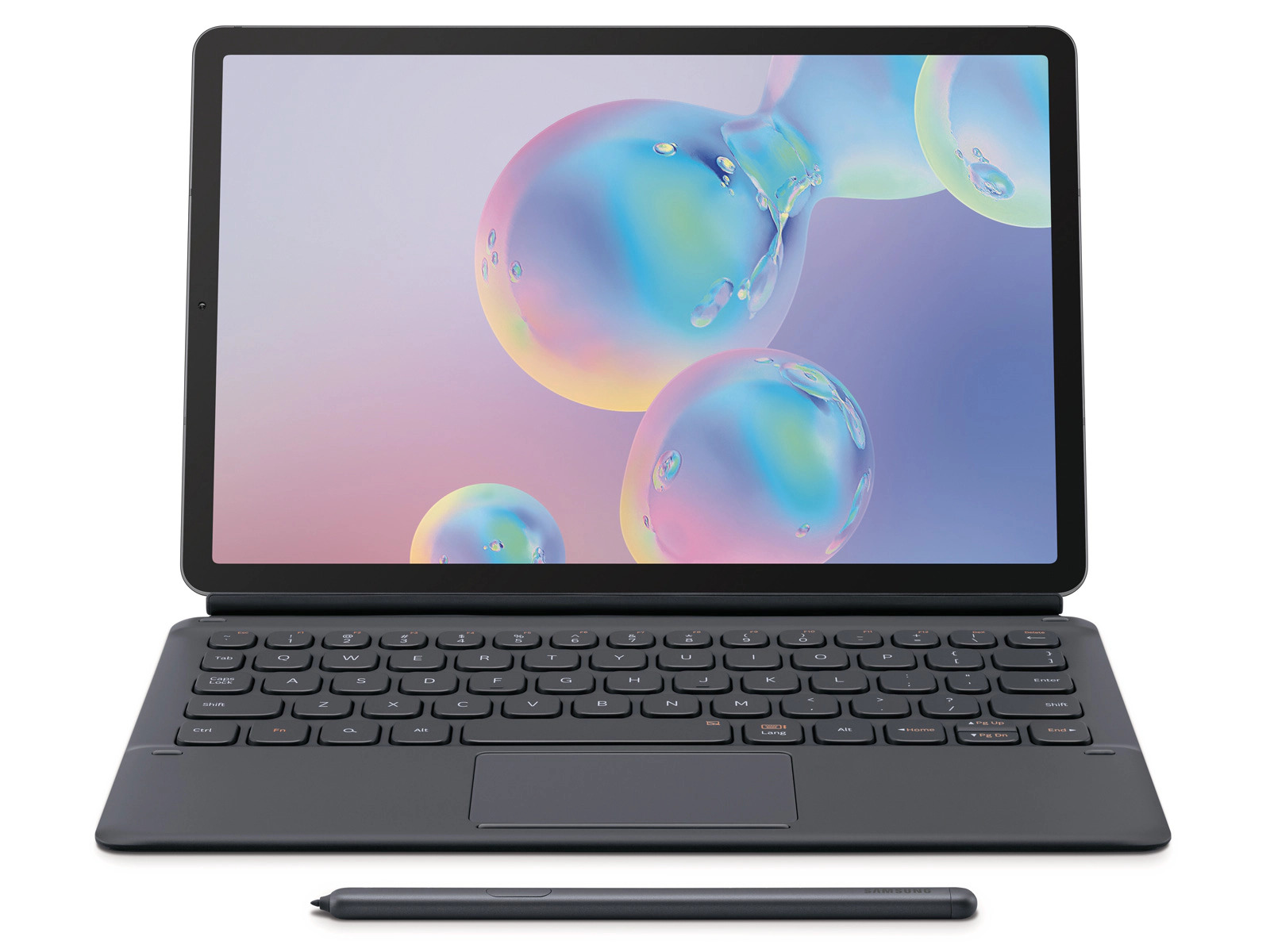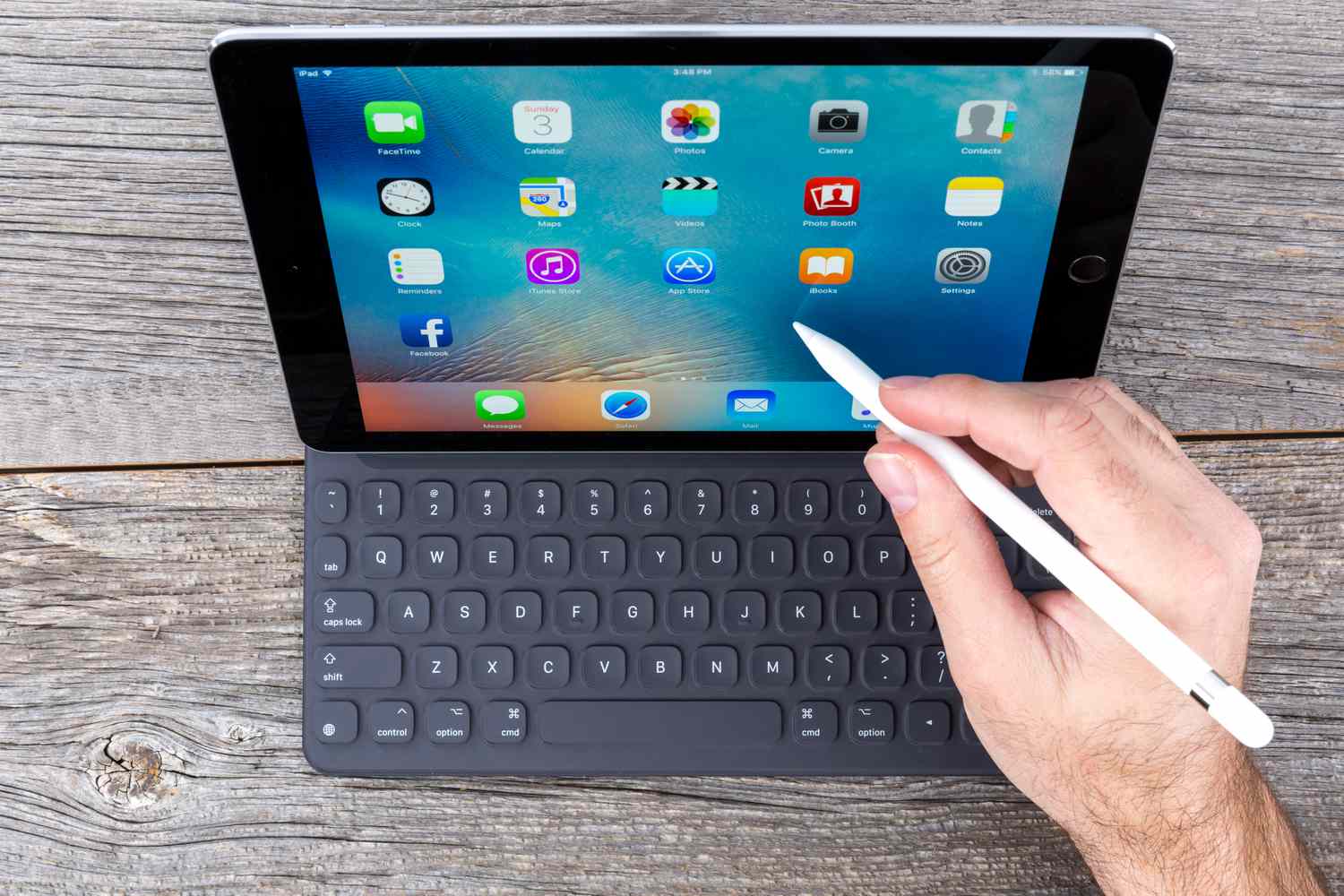Introduction
Welcome to the digital age where tablets have become an essential gadget for work, entertainment, and communication. While touchscreens have revolutionized user interaction, there are times when you may prefer the tactile feedback of a physical keyboard for more comfortable typing. Whether you’re writing emails, creating documents, or simply chatting with friends, connecting a keyboard to your tablet can greatly enhance your productivity and overall experience.
In this article, we will explore various methods to connect your keyboard to your tablet. We’ll discuss the most common connection options, including Bluetooth connectivity, USB OTG (On-The-Go) connection, and the use of wireless keyboards and dongles. Additionally, we’ll provide guidance on connecting mechanical keyboards, which are popular among typing enthusiasts.
While connecting a keyboard to a tablet may seem straightforward, it’s important to note that compatibility and settings may vary depending on your tablet’s operating system and model. However, by following the steps outlined in this article, you’ll be able to connect your keyboard to your tablet in no time.
Understanding the Connection Methods
Before we dive into the specifics of connecting a keyboard to your tablet, it is important to understand the different connection methods available. Each method has its advantages and considerations, so let’s explore them in detail.
- Bluetooth Connectivity: Bluetooth is a wireless technology that allows devices to communicate with each other over short distances. Many tablets and keyboards have built-in Bluetooth capabilities, making it a popular and convenient option for connecting a keyboard. To establish a connection, ensure that both the tablet and the keyboard have Bluetooth enabled, and then pair them following the manufacturer’s instructions.
- USB OTG Connection: USB OTG (On-The-Go) is a feature found in some tablets that allows you to connect external devices like keyboards using a USB OTG adapter. This method is particularly useful when your tablet doesn’t have built-in Bluetooth. To connect your keyboard using USB OTG, you’ll need a compatible adapter, which can usually be purchased separately. Simply plug the USB end of the adapter into your tablet’s charging port and connect your keyboard to the adapter’s USB port.
- Wireless Keyboards and Dongles: Another option is to use a wireless keyboard that comes with its own USB dongle. These keyboards use proprietary wireless technology instead of Bluetooth. To connect, insert the dongle into your tablet’s USB port and follow the manufacturer’s instructions for pairing. This method is often preferred by those who want a dedicated keyboard without relying on Bluetooth or USB OTG.
- Connecting a Mechanical Keyboard: If you’re a typing enthusiast or prefer the feel of mechanical keys, you can connect a mechanical keyboard to your tablet using either Bluetooth or USB OTG, depending on the keyboard’s capabilities. Mechanical keyboards often require more power than regular keyboards, so ensure your tablet can provide enough power, or use a powered USB hub for a stable connection.
Understanding these different connection methods will help you choose the most suitable option for your tablet and keyboard combination. Now that we have a grasp on the basic concepts, let’s move on to troubleshooting common connection issues in the next section.
Bluetooth Connectivity
Bluetooth connectivity is one of the most common and convenient methods to connect a keyboard to your tablet. Most modern tablets and keyboards come equipped with built-in Bluetooth capabilities. Here’s how you can establish a Bluetooth connection:
- Check Compatibility: Ensure that both your tablet and keyboard are compatible with Bluetooth. Check your tablet’s user manual or settings to confirm if it has Bluetooth functionality. Likewise, check your keyboard’s user manual or packaging to verify if it supports Bluetooth connectivity.
- Enable Bluetooth: On your tablet, go to the settings menu and look for the Bluetooth option. Turn on Bluetooth if it’s not already enabled. Do the same for your keyboard by following the manufacturer’s instructions to activate Bluetooth mode.
- Pairing: Once Bluetooth is enabled on both devices, you’ll need to pair them. On your tablet, search for available Bluetooth devices. You should see your keyboard listed. Select it and follow any on-screen instructions to complete the pairing process. The instructions may include entering a PIN or tapping a confirmation on the keyboard.
- Testing the Connection: After successful pairing, test the connection by opening a text editor or any application that accepts keyboard input. Start typing on the physical keyboard, and you should see the text appearing on your tablet’s screen.
- Reconnecting: Once you’ve established a Bluetooth connection, your tablet and keyboard should automatically reconnect whenever they are in range and both devices have Bluetooth enabled. However, if the connection is lost or you want to connect to a different device, you may need to repeat the pairing process.
- Battery Management: Keep in mind that Bluetooth connections consume battery power. To maximize battery life, turn off Bluetooth when you’re not using it or when the tablet and keyboard are out of range.
Bluetooth connectivity offers the benefit of being wireless and allowing you to type comfortably at a distance from your tablet. However, it’s important to remember that Bluetooth range is typically limited to around 30 feet, and obstacles like walls or interference from other devices can affect the connection quality.
USB OTG Connection
If your tablet doesn’t have built-in Bluetooth or you prefer a more direct connection, you can use the USB OTG (On-The-Go) method to connect your keyboard. Here’s how to do it:
- Check Compatibility: Make sure your tablet supports USB OTG functionality. Not all tablets have this feature, so refer to your tablet’s user manual or specifications to confirm if it can support USB OTG.
- Get a USB OTG Adapter: To connect your keyboard to the tablet, you’ll need a USB OTG adapter. This small device has a USB port on one end and a connector that fits into your tablet’s charging port on the other end. You can purchase USB OTG adapters online or at electronics stores.
- Connect the Adapter and Keyboard: Plug the USB OTG adapter into your tablet’s charging port. Then, connect your keyboard’s USB cable to the USB port on the adapter. Make sure both the adapter and the keyboard are securely connected.
- Start Typing: Once the connection is established, your tablet should recognize the keyboard automatically. Test the connection by opening a text editor or any application that accepts keyboard input. Begin typing on the physical keyboard, and you should see the text appearing on your tablet’s screen.
- Power Considerations: Keep in mind that some keyboards, especially mechanical ones, may require more power than your tablet can provide. In such cases, you’ll need to use a powered USB hub between the adapter and the keyboard. The powered USB hub will provide the necessary power to the keyboard and ensure a stable connection.
- Disconnecting: To disconnect the keyboard, simply unplug the USB cable from the USB OTG adapter. If you’re using a powered USB hub, unplug the keyboard from the hub first, and then disconnect the hub from the USB OTG adapter.
USB OTG connection offers a reliable and direct method to connect your keyboard to your tablet. It is particularly useful when your tablet doesn’t have Bluetooth capabilities or when you prefer a wired connection. Just remember to check compatibility, have the necessary adapter, and ensure that both the adapter and the keyboard are properly connected.
Wireless Keyboards and Dongles
If you prefer a wireless keyboard but your tablet doesn’t have built-in Bluetooth, or you want a dedicated keyboard without relying on Bluetooth, using a wireless keyboard with a dongle can be a great option. Here’s how to connect a wireless keyboard to your tablet:
- Get a Wireless Keyboard: Purchase a wireless keyboard that comes with its own USB dongle. The dongle acts as a receiver for the keyboard’s wireless signals. Ensure that the keyboard and dongle are compatible with your tablet’s operating system.
- Insert the Dongle: Insert the USB dongle into an available USB port on your tablet. The dongle is typically small and often sticks out slightly from the USB port.
- Power On the Keyboard: Most wireless keyboards have a power switch on the back or side. Turn on the keyboard by sliding the switch to the “On” position. Some keyboards may have a connect button that needs to be pressed to establish the initial connection.
- Pairing: After turning on the wireless keyboard, it should automatically pair with the dongle. If not, consult the keyboard’s user manual to find the specific pairing instructions. Typically, the pairing process may involve pressing a specific combination of keys on the keyboard or pressing a connect button on both the keyboard and the dongle.
- Testing the Connection: Once the keyboard is successfully paired with the dongle, test the connection by opening a text editor or any application that accepts keyboard input. Start typing on the wireless keyboard, and you should see the text appearing on your tablet’s screen.
- Reconnecting: The wireless keyboard and dongle should automatically reconnect whenever they are within range and both devices are powered on. If the connection is lost or you want to connect to a different device, consult the keyboard’s user manual for specific instructions on re-pairing.
- Battery Management: Wireless keyboards often operate on batteries. To conserve battery power, remember to turn off the keyboard when not in use or when the tablet and keyboard are out of range.
Using a wireless keyboard with a dongle provides the convenience of a wireless setup without relying on Bluetooth. It allows for a dedicated keyboard and often offers a reliable connection. Just ensure compatibility, insert the dongle, and follow the manufacturer’s instructions to pair the keyboard with the dongle.
Connecting a Mechanical Keyboard
If you’re a typing enthusiast or prefer the tactile feedback of mechanical keys, connecting a mechanical keyboard to your tablet can greatly enhance your typing experience. Here’s how you can connect a mechanical keyboard to your tablet:
- Check Keyboard Compatibility: Ensure that your mechanical keyboard is compatible with your tablet’s operating system. Confirm if the keyboard supports either Bluetooth or USB connectivity.
- Bluetooth or USB: Determine whether your mechanical keyboard supports Bluetooth or USB connectivity. Some mechanical keyboards offer both options, while others may only have one. Choose the appropriate connection method based on your keyboard’s capabilities and preferences.
- Bluetooth Connection: If your mechanical keyboard supports Bluetooth, follow the same steps as explained in the “Bluetooth Connectivity” section. Enable Bluetooth on your tablet and keyboard, pair them, and test the connection. Remember to check the battery level of your mechanical keyboard, as Bluetooth connections consume power.
- USB Connection: To connect your mechanical keyboard using USB, you can either utilize a USB OTG adapter (as explained in the “USB OTG Connection” section) or plug the keyboard directly into a USB port on your tablet, if available. Ensure that your tablet can supply enough power to the mechanical keyboard, as some models may require more power than others.
- Testing and Adjustments: Once you’ve connected your mechanical keyboard, test the connection by typing in a text editor or any application that accepts keyboard input. Check if all keys are functioning correctly. You may also need to adjust keyboard settings on your tablet, such as the language layout or key repeat rate, to ensure optimal typing experience.
- Power Considerations: Mechanical keyboards typically have a higher power requirement than regular keyboards, especially if they incorporate RGB lighting or other advanced features. If your tablet cannot provide sufficient power, consider using a powered USB hub or connecting the keyboard to a separate power source, if supported by the keyboard.
Connecting a mechanical keyboard to your tablet allows you to enjoy the tactile feedback and precise keystrokes that enthusiasts and professionals appreciate. Whether you choose a Bluetooth connection or USB, follow the appropriate steps and settings to establish a reliable and enjoyable typing experience.
Troubleshooting Common Connection Issues
While connecting a keyboard to your tablet is generally a straightforward process, you may encounter some common issues that can hinder the connection. Here are a few troubleshooting tips to help you resolve these problems:
- Check Compatibility and Requirements: Ensure that your tablet and keyboard are compatible with each other. Check the specifications, operating system requirements, and any specific compatibility guidelines provided by the manufacturer.
- Ensure Bluetooth and USB OTG Are Enabled: For Bluetooth connections, make sure that Bluetooth is enabled on both your tablet and keyboard. If using USB OTG, verify that the USB OTG option is enabled in your tablet’s settings.
- Pairing Your Keyboard with the Tablet: If you’re using Bluetooth, ensure that you properly pair the keyboard with your tablet. Follow the manufacturer’s instructions to enter pairing mode on the keyboard and complete the pairing process on your tablet.
- Updating Drivers and Firmware: Check if there are any firmware updates or driver updates available for your tablet or keyboard. Updating the software can fix bugs, improve compatibility, and enhance performance.
- Restart Devices: Sometimes, simply restarting both your tablet and keyboard can resolve connection issues. Turn off both devices, wait a few seconds, and then power them back on.
- Remove and Reconnect Devices: If you’re experiencing connection problems, remove the keyboard from the list of Bluetooth devices or unplug the USB cable/dongle. Then, attempt to reconnect the keyboard following the appropriate setup process.
- Check Range and Obstructions: Ensure that you are within the effective range of the connection, especially for Bluetooth connections. Additionally, avoid obstructions such as walls or other electronic devices that may interfere with the signal.
- Replace Batteries or Charge: If you’re using a wireless keyboard with batteries, make sure they are not depleted. Replace the batteries if necessary, or charge the keyboard if it has a rechargeable battery.
- Consult User Manuals and Support: If you’ve tried the above troubleshooting steps and are still experiencing issues, consult the user manuals for both your tablet and keyboard. Additionally, reach out to the manufacturer’s support for further assistance.
By following these troubleshooting tips, you can overcome common connection issues and establish a stable and reliable connection between your keyboard and tablet. Remember to refer to the specific instructions provided by the manufacturer for your device to get the best results.
Check Compatibility and Requirements
Before attempting to connect a keyboard to your tablet, it is crucial to ensure compatibility and check the specific requirements for both devices. Here are some key considerations:
- Device Compatibility: Verify that your keyboard and tablet are compatible with each other. Check the manufacturer specifications, user manuals, or online resources for compatibility information. Pay attention to the operating systems and versions supported by the keyboard and tablet.
- Connectivity Options: Determine the connectivity options available for both your keyboard and tablet. Common options include Bluetooth, USB, or wireless connections with dongles. Ensure that your tablet has the necessary ports or capabilities to support the desired connection method.
- Operating System Compatibility: Ensure that both the keyboard and tablet you intend to connect are compatible with the tablet’s operating system. Some keyboards may be optimized for specific operating systems, such as iOS, Android, or Windows. Check for any specific compatibility requirements mentioned by the manufacturer.
- Power Requirements: Consider the power requirements of the keyboard and the tablet. Some keyboards require external power sources or have higher power consumption. Ensure that your tablet can provide sufficient power or make arrangements for a powered USB hub or separate power source if needed.
- Language and Layout: Check if the keyboard supports the language and layout you prefer. Keyboards may have different physical layouts or use different character sets, so make sure it aligns with your typing needs.
- Additional Features: Take note of any additional features or functionalities that the keyboard offers, such as multimedia keys, backlighting, programmable macros, or ergonomic design. Ensure that these features are supported by your tablet’s operating system or any necessary software.
- Driver or App Requirements: Some keyboards may require specific drivers or companion apps to enable advanced functionality or customization options. Check if such drivers or apps are available for your tablet’s operating system and whether they are necessary for a seamless connection.
By thoroughly checking compatibility and requirements beforehand, you can ensure a smooth and successful connection between your keyboard and tablet. Pay attention to the specific specifications, connectivity options, power requirements, language compatibility, and any additional features or software requirements to ensure optimal performance.
Ensure Bluetooth and USB OTG Are Enabled
To successfully connect your keyboard to your tablet, it’s important to ensure that the necessary connectivity options, such as Bluetooth and USB OTG, are enabled. Here’s what you need to do:
- Bluetooth: If you plan to connect your keyboard using Bluetooth, start by checking if Bluetooth is enabled on both your tablet and keyboard. On your tablet, navigate to the settings menu and look for the Bluetooth option. Enable Bluetooth if it is turned off. Many tablets have a dedicated toggle switch or button to easily turn Bluetooth on or off.
- Keyboard Bluetooth Mode: Next, activate the Bluetooth mode on your keyboard. Refer to the keyboard’s user manual or instructions provided by the manufacturer to determine how to enter Bluetooth pairing mode. Typically, you may need to press and hold a specific key combination or a dedicated Bluetooth pairing button on the keyboard to enable Bluetooth discoverability.
- USB OTG: For keyboards that require a USB connection, ensure that USB OTG is enabled on your tablet. USB OTG (On-The-Go) allows your tablet to act as a host and accept USB peripherals like keyboards. Check your tablet’s settings or consult the user manual to enable USB OTG functionality if your tablet supports it.
- USB OTG Adapter: If your tablet does not natively support USB OTG, you’ll need to purchase a USB OTG adapter. This small adapter allows you to connect USB devices, such as keyboards, to your tablet. Make sure the adapter is compatible with your tablet’s charging port and has a proper USB input for connecting the keyboard.
- Connecting the Keyboard: Once Bluetooth or USB OTG is enabled on the respective devices, it’s time to establish the connection. Follow the pairing instructions provided by the keyboard manufacturer or the connection process for USB OTG adapters. Typically, this involves scanning for available Bluetooth devices on your tablet and selecting the keyboard from the list, or plugging the keyboard into the USB OTG adapter and connecting the adapter to your tablet’s charging port.
- Testing the Connection: After completing the pairing or connecting process, test the connection by opening a text editor or any application that accepts keyboard input on your tablet. Begin typing on the physical keyboard, and you should see the text appearing on your tablet’s screen. Confirm that all keys are functioning as expected.
By ensuring that Bluetooth and USB OTG are enabled on your tablet, and properly activating the corresponding modes on your keyboard, you’ll be ready to establish a successful connection and take advantage of the enhanced typing experience on your tablet.
Pairing Your Keyboard with the Tablet
In order to establish a connection between your keyboard and tablet, you need to pair them. The pairing process may vary depending on the type of connection you’re using, such as Bluetooth or USB. Here’s a general guide on how to pair your keyboard with your tablet:
- Bluetooth Pairing:
- Ensure that both your tablet and keyboard have Bluetooth enabled.
- On your tablet, go to the Bluetooth settings menu and search for available devices.
- On your keyboard, put it in pairing mode. Refer to the manufacturer’s instructions on how to activate pairing mode, as it can differ across keyboards.
- When your keyboard appears in the list of available devices on your tablet, select it to initiate the pairing process.
- Follow any on-screen prompts or input a required PIN code to complete the pairing process.
- Once paired, your keyboard should be connected to your tablet, and you can start typing on the physical keyboard.
- USB OTG Connection:
- If you’re using a USB OTG adapter, connect it to your tablet’s charging port.
- Plug the USB end of the adapter into the appropriate USB port.
- Connect your keyboard’s USB cable to the USB port on the adapter.
- Your tablet should recognize the keyboard automatically, and you can immediately start typing.
Remember to consult your keyboard’s user manual for specific pairing instructions, as some keyboards may require additional steps or have unique pairing methods. Follow the manufacturer’s guidelines closely to ensure a successful pairing process.
If, for any reason, the initial pairing is unsuccessful or you encounter issues, try the following troubleshooting steps:
- Ensure that your tablet and keyboard are within close proximity to each other, especially for Bluetooth connections.
- Verify that both devices have sufficient battery power or are properly charged.
- Restart both your tablet and keyboard and try pairing again.
- Clear any existing pairing history on your tablet or keyboard before attempting the pairing process again.
- If using Bluetooth, double-check that both devices are in pairing mode and discoverable.
By successfully pairing your keyboard with your tablet, you’ll be able to enjoy the convenience and comfort of typing on a physical keyboard for improved productivity and efficiency.
Updating Drivers and Firmware
Updating the drivers and firmware for your keyboard and tablet can help resolve compatibility issues, improve performance, and ensure a smooth connection. Here’s what you need to know about updating drivers and firmware:
- Keyboard Drivers: Keyboard manufacturers may release updated drivers to enhance compatibility with different operating systems and improve functionality. Check the manufacturer’s website or support page for the latest driver downloads for your specific keyboard model.
- Tablet Updates: Keep your tablet’s operating system up to date by installing system updates. These updates often include bug fixes, security patches, and compatibility improvements. Check your tablet’s settings for available updates and install them as necessary.
- Firmware Updates: In addition to drivers, some keyboards may have firmware updates available. Firmware is the software embedded in the hardware of the keyboard. Firmware updates can address performance issues and add new features. Check the manufacturer’s website or support page for any firmware updates specific to your keyboard model.
- Installation Instructions: When updating drivers or firmware, carefully follow the installation instructions provided by the manufacturer. Read through any release notes or documentation to understand the improvements and changes brought by the update. Ensure that you’re downloading the correct version for your specific keyboard and tablet model.
- Backup Important Data: Before updating any software or firmware, it’s a good practice to back up important data on your tablet. While updates are generally safe, unforeseen issues may arise during the process, and having a backup ensures that you can restore your data if necessary.
- Connection Testing: After updating the drivers or firmware, always test the connection between your keyboard and tablet to ensure that the updates haven’t introduced any new issues. Verify that all keys are functioning correctly and that the connection is stable.
Regularly checking for driver and firmware updates is a good practice to ensure optimal performance and compatibility between your keyboard and tablet. By keeping both your keyboard and tablet updated, you can mitigate potential connection issues and enjoy a more seamless typing experience.
Conclusion
Connecting a keyboard to your tablet opens up a world of possibilities for enhanced productivity and a more comfortable typing experience. Whether you choose Bluetooth connectivity, USB OTG, or a wireless keyboard with a dongle, the ability to use a physical keyboard can greatly benefit you in various tasks.
Throughout this article, we’ve discussed the different connection methods, including Bluetooth, USB OTG, and wireless keyboards with dongles. We’ve also provided troubleshooting tips for common connection issues and highlighted the importance of checking compatibility, enabling Bluetooth and USB OTG, and keeping drivers and firmware up to date.
Remember to consult the user manuals and follow the manufacturer’s instructions for your specific keyboard and tablet models. Each device may have unique requirements and steps for pairing and establishing a connection.
With the proper connection and configuration, you can type away on your tablet with ease and efficiency. From writing emails and documents to chatting with friends and engaging in creative tasks, a keyboard can be a valuable accessory to enhance your tablet experience.
So, take advantage of the available connection options, troubleshoot any issues that may arise, and enjoy the benefits of having a physical keyboard for your tablet. Happy typing!









